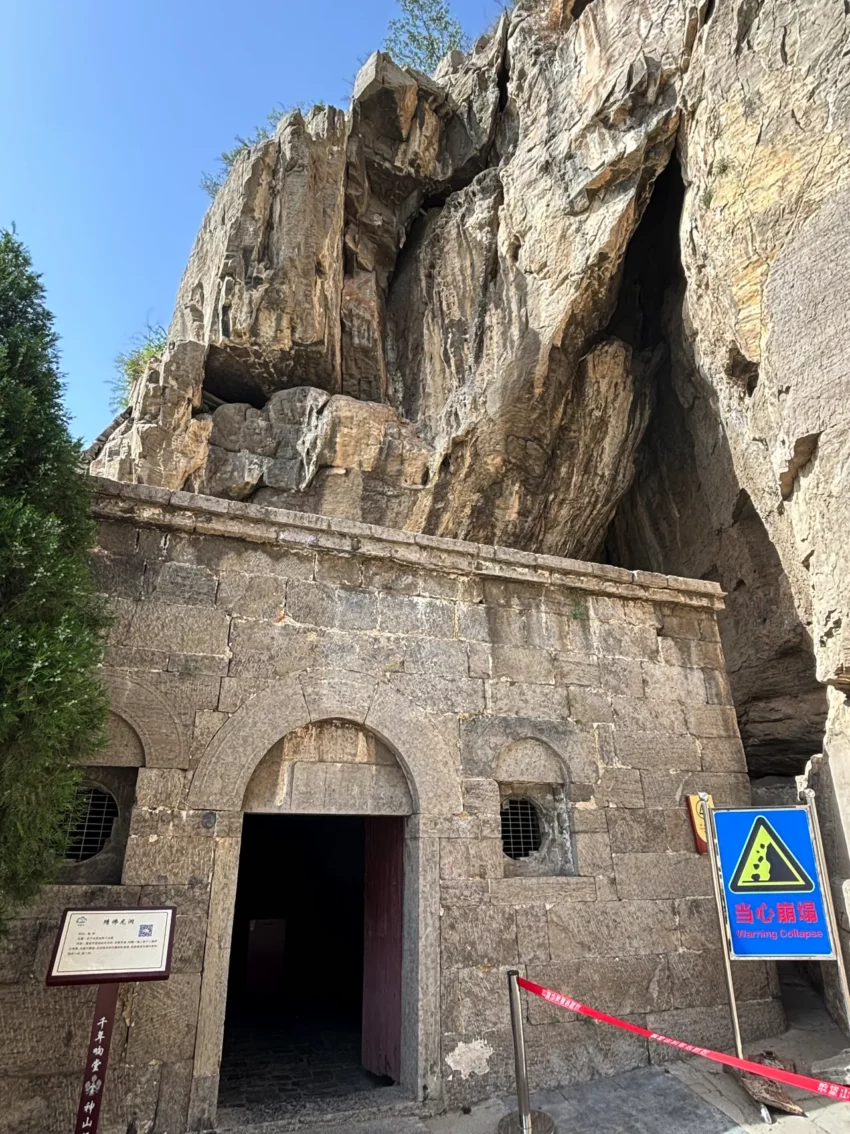Historical Significance of Xiangtangshan Caves
Artisans first carved the Xiangtangshan Caves during the Northern Qi Dynasty, between AD 550 and 577. Subsequently, artists from the Sui, Tang, Song, and Ming dynasties also contributed to the caves’ development. These caves, located in Hebei province, stand out as the largest in the region. Craftsmen chose the top-quality rocks of Mount Drum for their work, enhancing the caves’ beauty with the surrounding picturesque scenery.
Get your dose of History via Email
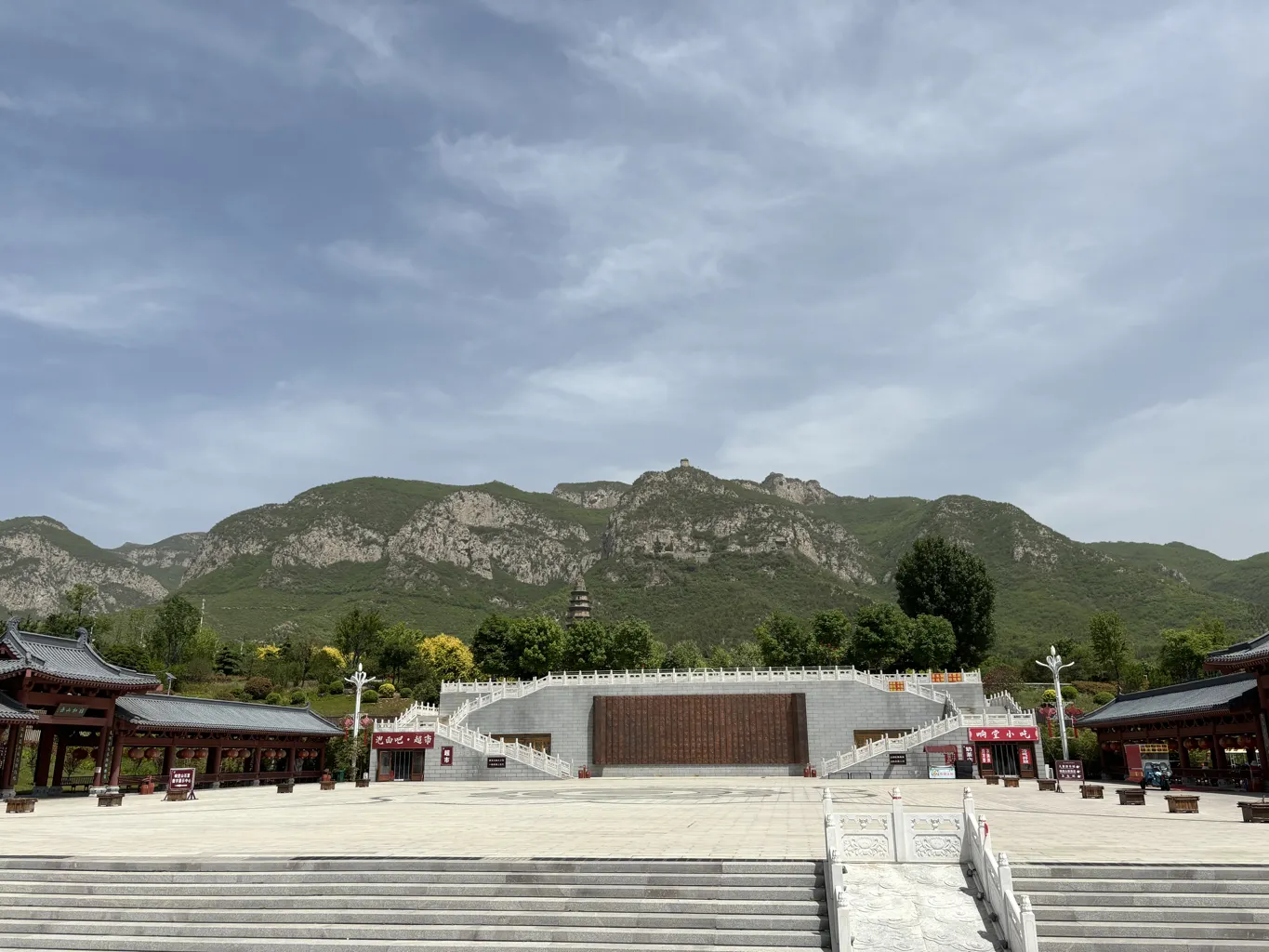
Unique Acoustic Features and Artistic Value
The name “Xiangtang,” meaning “making a loud voice,” derives from a unique acoustic feature. When people clap their hands or swing their sleeves, the caves resonate with loud echoes. This phenomenon adds a mystical element to the serene and deep caverns. The caves house beautifully crafted Buddha statues and intricate flower sculptures, showcasing elegance and artistic finesse.
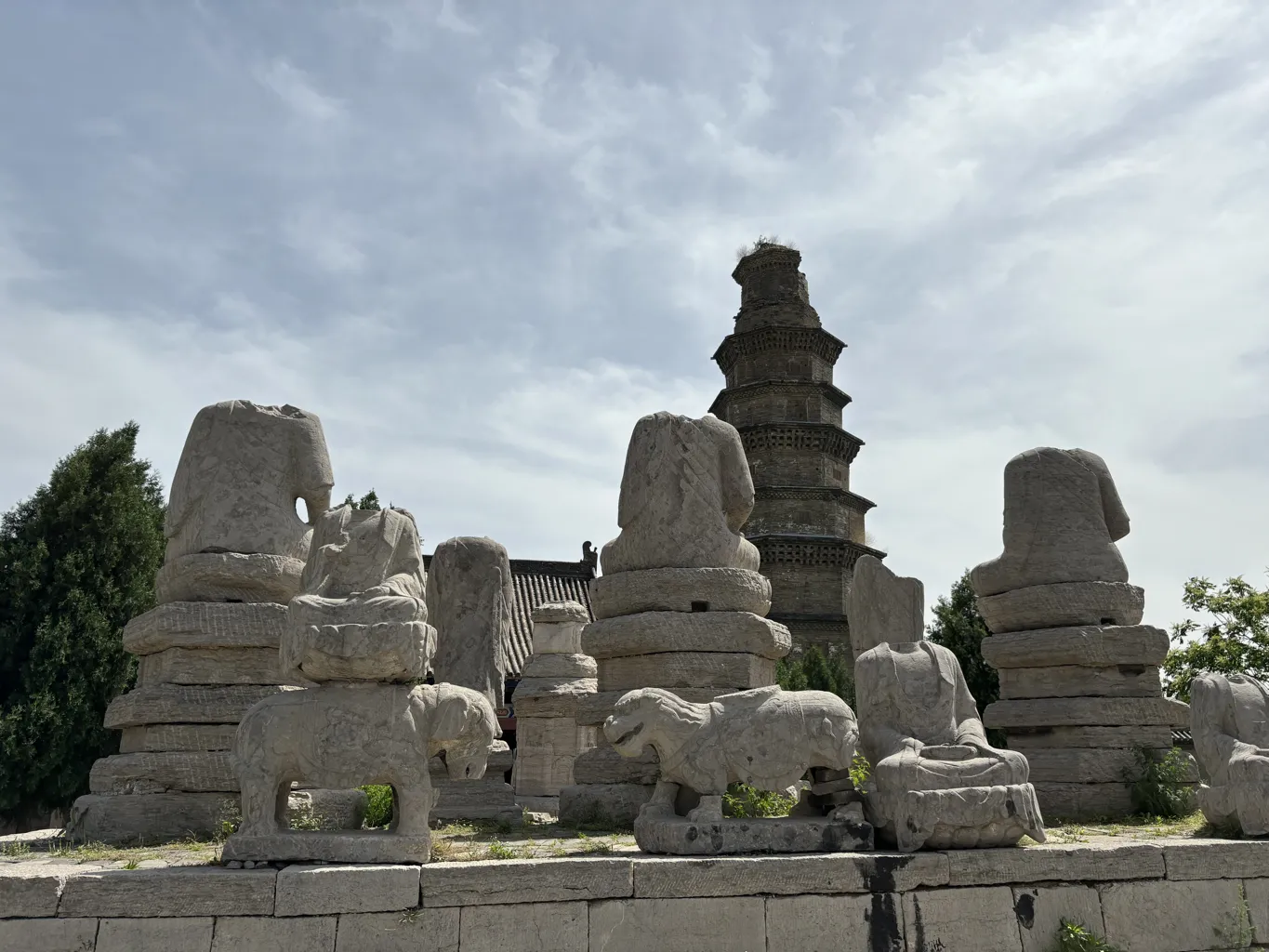
A Crucial Link in Chinese Cave Art
The art of the Xiangtangshan Caves represents a pivotal transition in Chinese cave art. It bridges the earlier works found in the Yungang Caves in Datong with those in the Longmen Caves in Luoyang. This evolution marks an important phase in the history of Chinese sculpture. Moreover, the caves serve as a significant repository for studying various aspects of Chinese culture. These include Buddhism, architecture, sculpture, painting, and calligraphy, making them invaluable to historians and art enthusiasts alike.
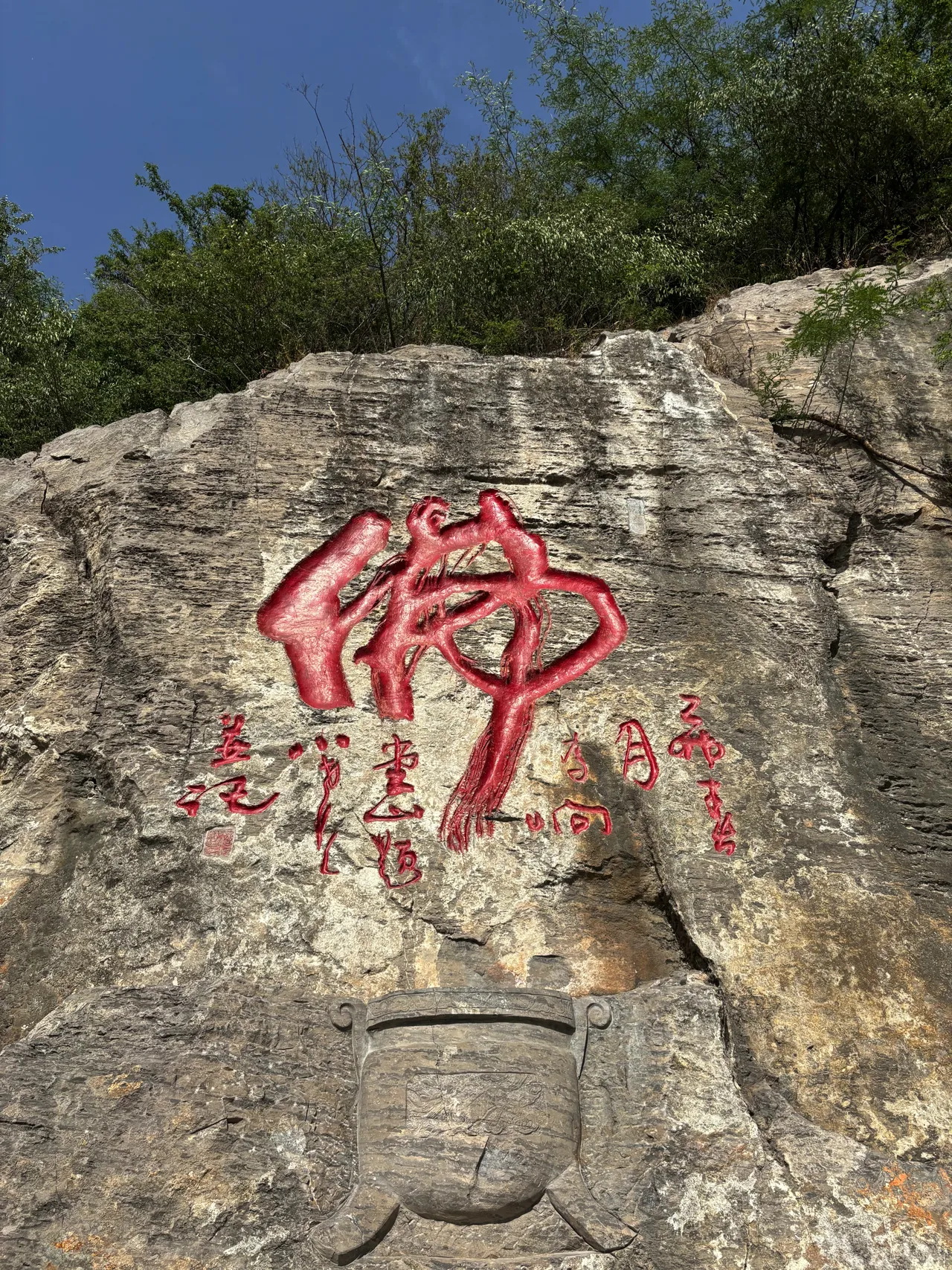
The Guandi Cave
The Guandi Cave, dating back to the Ming Dynasty, is situated 5 meters north of Zhongdong and Shakyadong. This cave features a distinct horizontal rectangular layout.
Architectural and Artistic Details
Inside, the back wall hosts a niche containing a seated statue of Emperor Guan. This central figure is flanked by dry Buddhas carved on both the left and right walls. Additionally, the right wall bears an inscription that provides historical context. It states, “Thirty-five Buddhas and Guanyin Bodhisattva were built in the third year of Jiajing (1524).” The cave measures approximately 2 meters in depth and 2.8 meters in width.
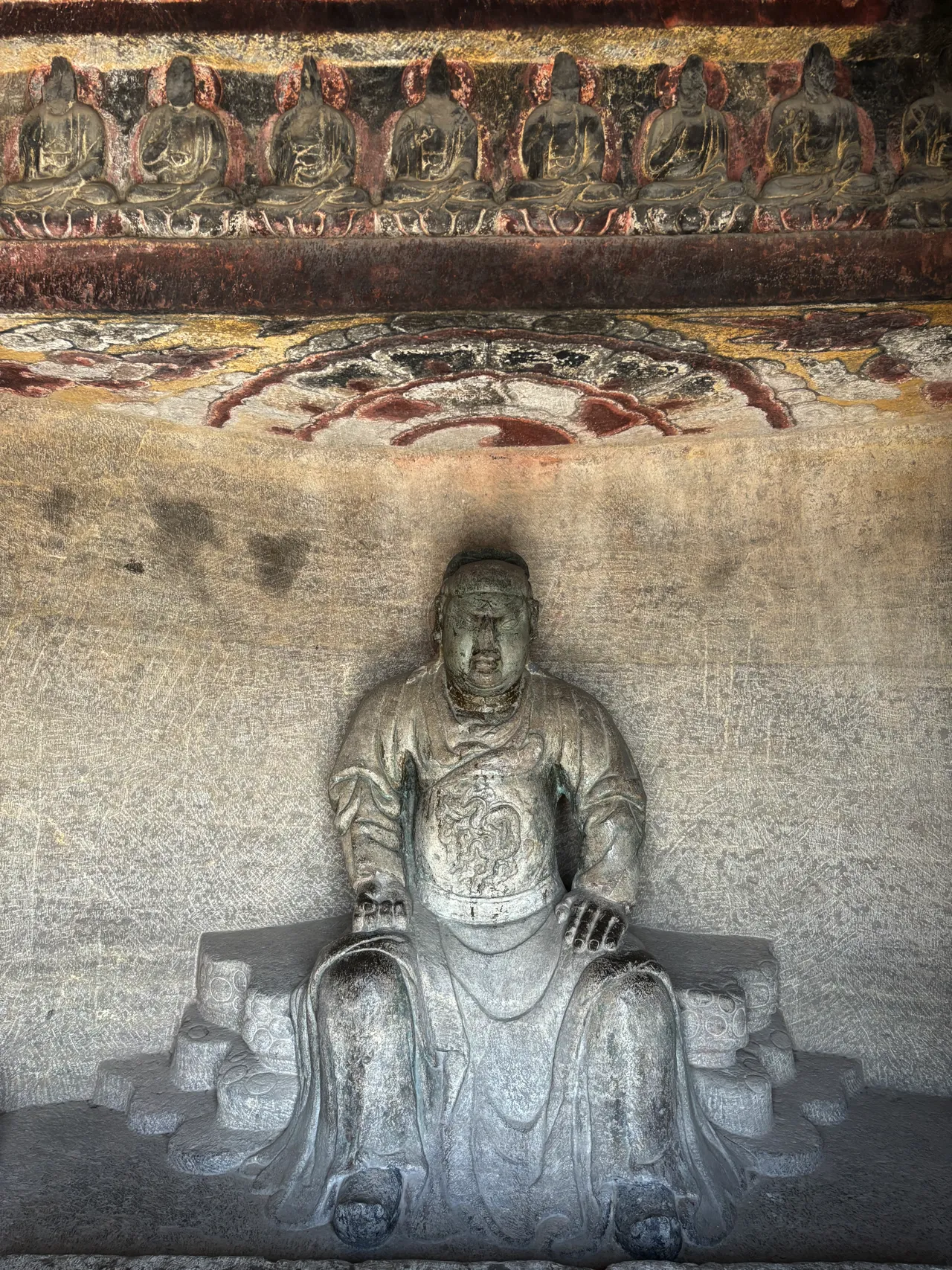
Cultural Significance
This inscription not only dates the artwork but also highlights the religious and cultural reverence during that period. The presence of Emperor Guan alongside Buddhas and Guanyin Bodhisattva underscores the syncretic religious practices prevalent during the Ming era. The Guandi Cave thus serves as a valuable artifact for understanding the spiritual and artistic landscape of its time.

The Sakya Cave
Sakya Cave, carved during the Northern Qi era, is prominently located in the large grotto in the middle of the Grotto Area. This cave is renowned for its intricate architectural design.
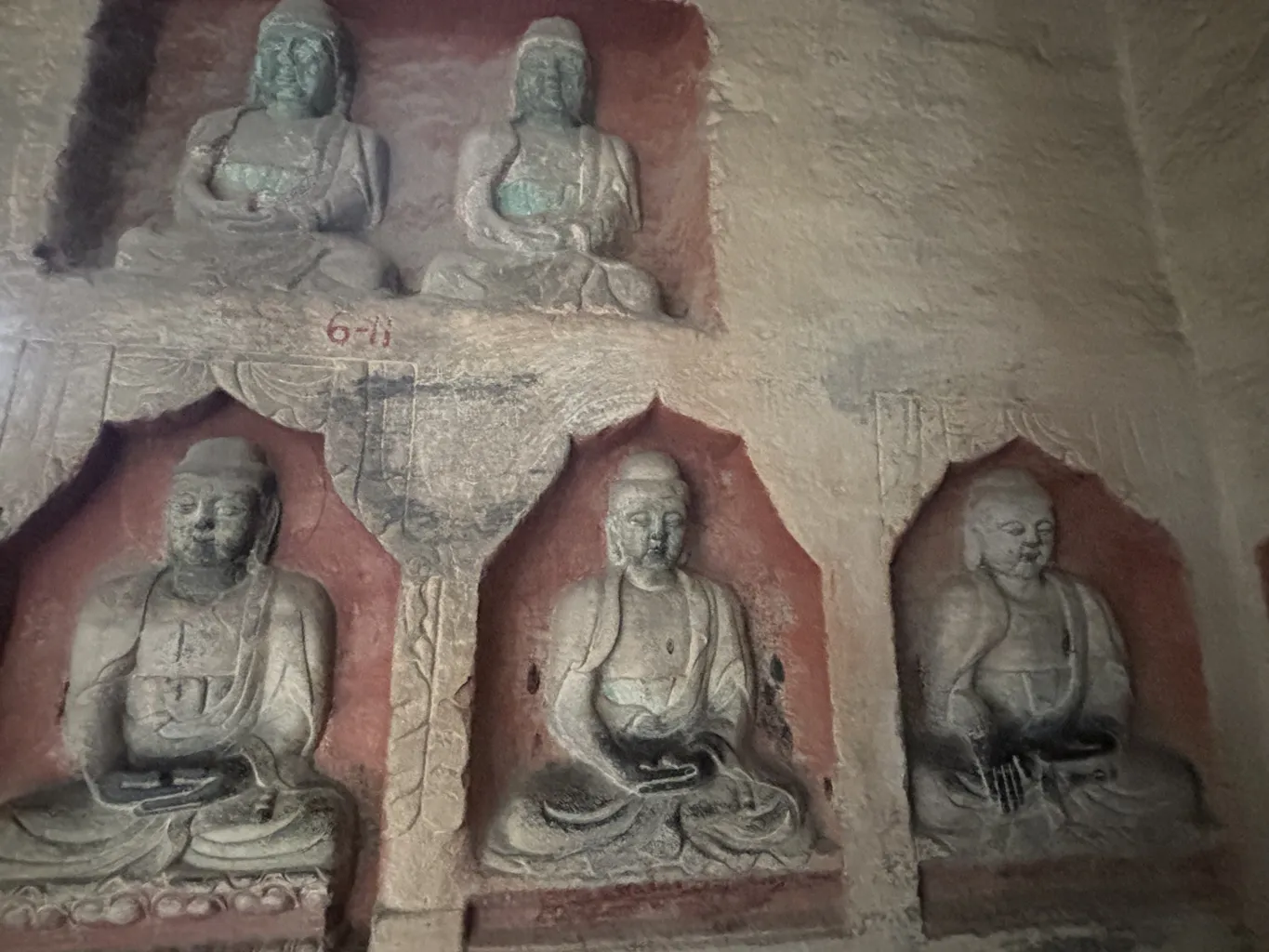
Structural Design and Artistic Elements
The cave features a central square column pagoda temple design, which includes four pillars and three bays, dividing the space into a front and rear chamber. In the middle of the back room, square pillars rise, connecting to the mountain at the upper parts of the left, right, and back walls, while the lower part forms a corridor. These square pillars dominate the indoor area, creating a unique spatial arrangement.
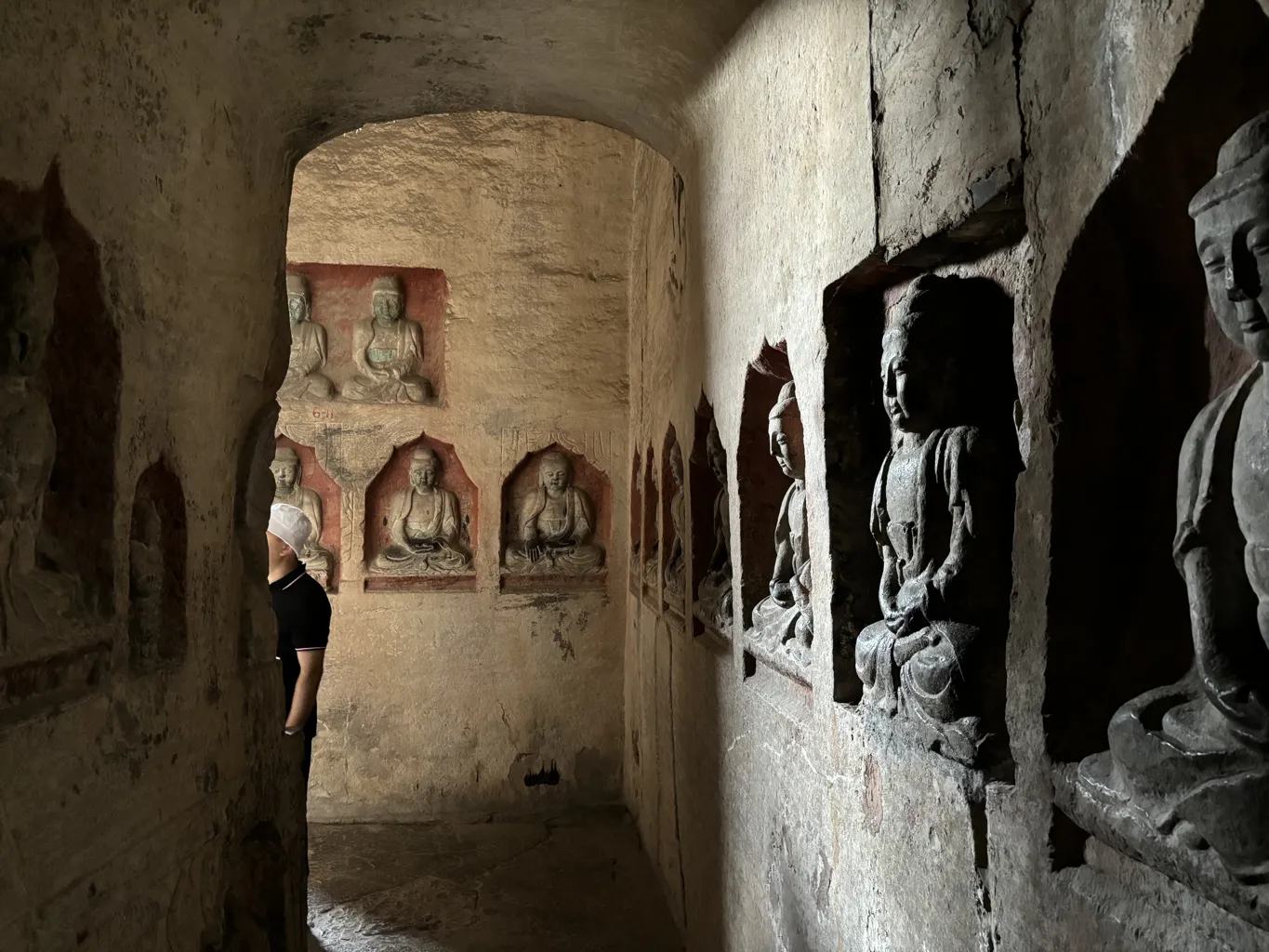
Detailed Carvings and Spiritual Significance
A large niche in the middle of the square pillar houses a Buddha, two disciples, and two Bodhisattvas, intricately carved. Additionally, the left and right sides of the arch feature two Bodhisattvas, and two heavenly kings reside in the secondary niche. The outer facade of the cave mimics the shape of a covered bowl pagoda, adding to its aesthetic and spiritual allure. Remnants of the cave opening monument can still be seen on the north side of the cave’s exterior. The cave measures 7.1 meters in depth and 7.8 meters in width.
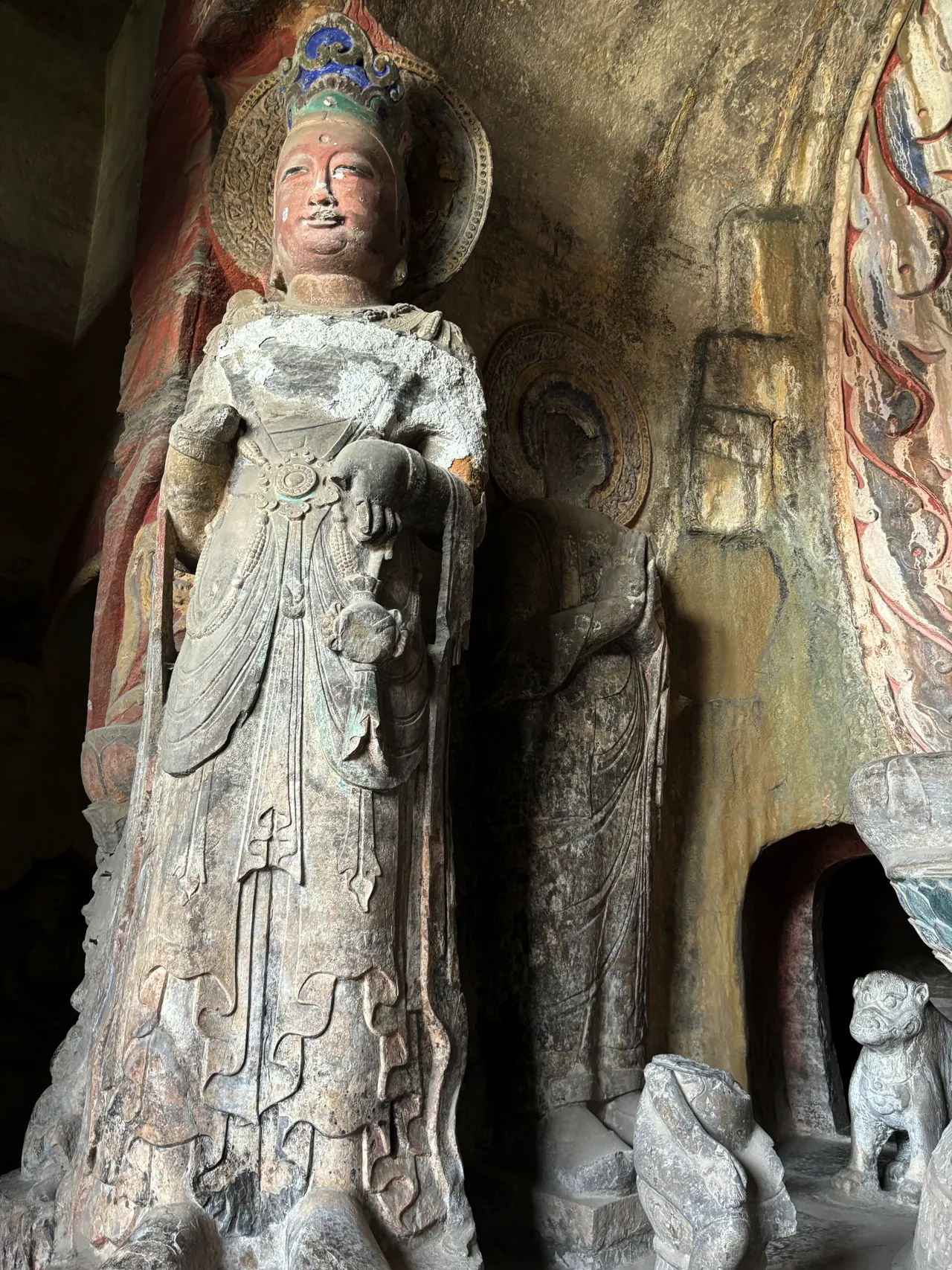
Cultural and Historical Insights
The Sakya Cave offers profound insights into the religious art and architectural sophistication of the Northern Qi period. The detailed carvings and structural design reflect the deep spiritual and cultural values of the era, making it a significant site for both historical and religious studies.
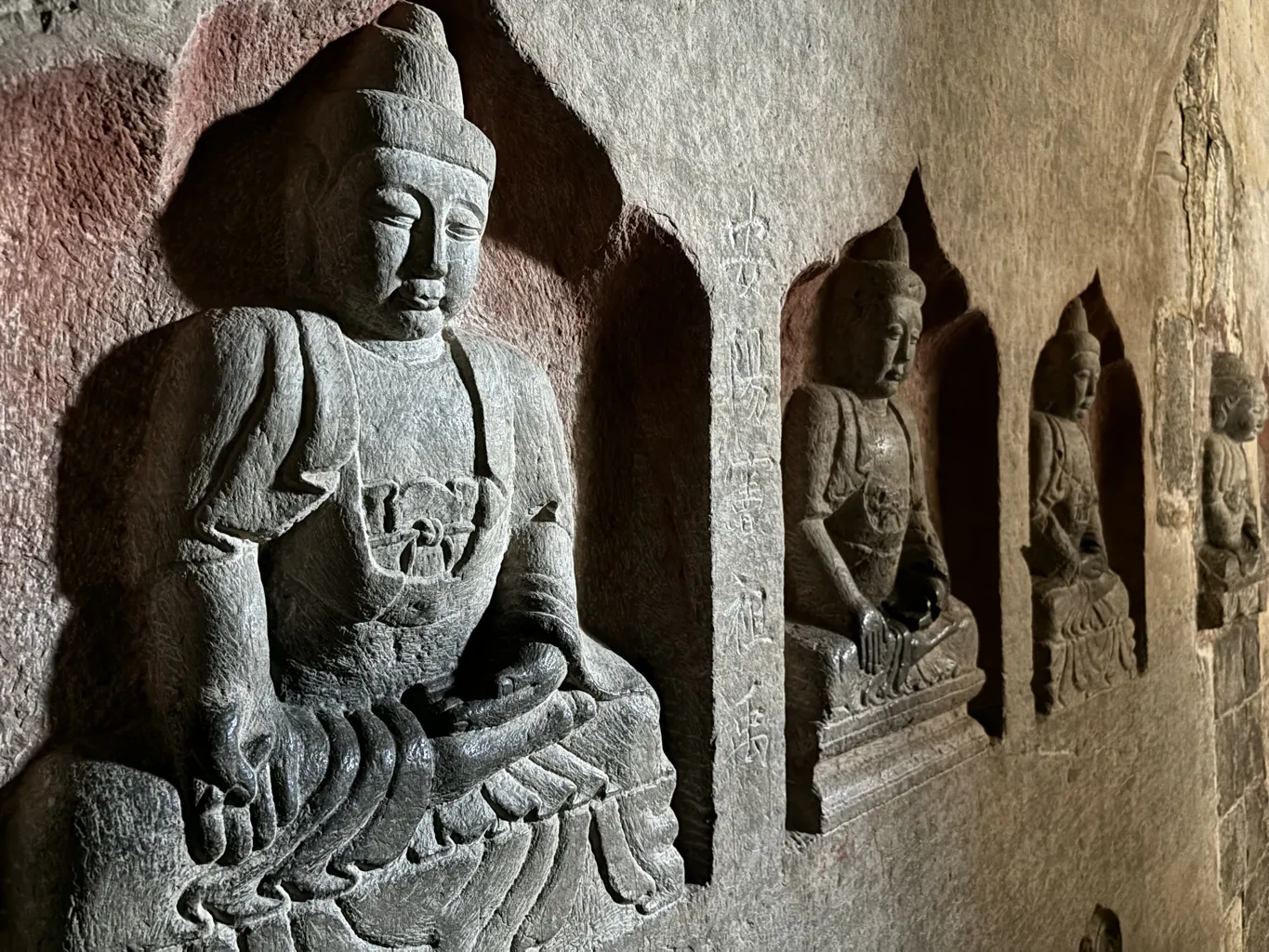
The Big Buddha Cave
Big Buddha Cave, carved during the Eastern Wei and Northern Qi periods, is located in the large grottoes in the north district of the grottoes. This cave is distinguished by its central square column pagoda temple design.
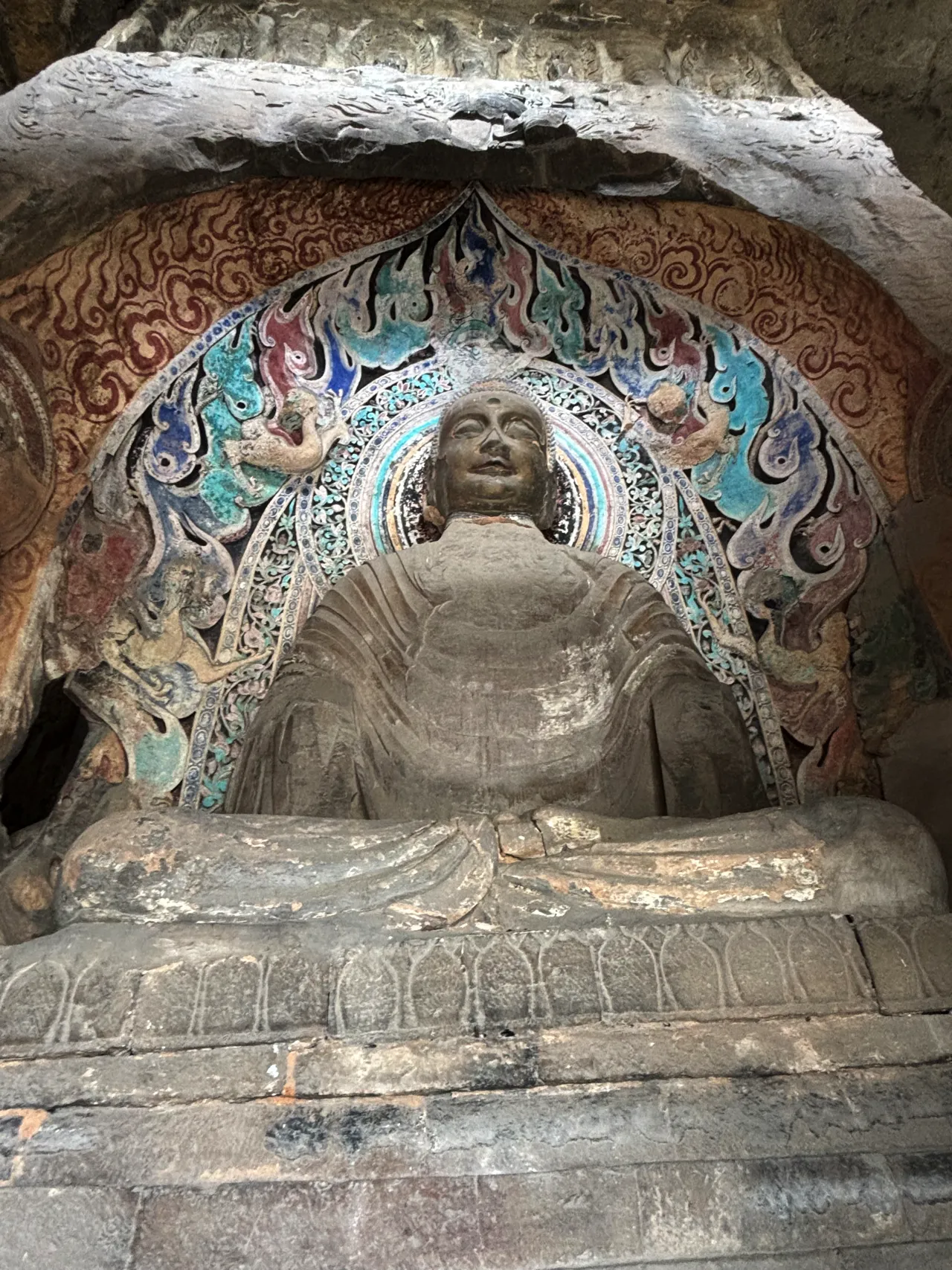
Structural Details and Artistic Features
The cave is divided into front and back chambers; unfortunately, the front chamber has collapsed. The remaining back chamber, or main chamber, features a square plane with a flat top. Niches adorn three sides of the central square column, enhancing the spiritual ambiance. The upper part of the back wall connects to the mountain, while the lower part forms a low corridor, facilitating passage for worship.
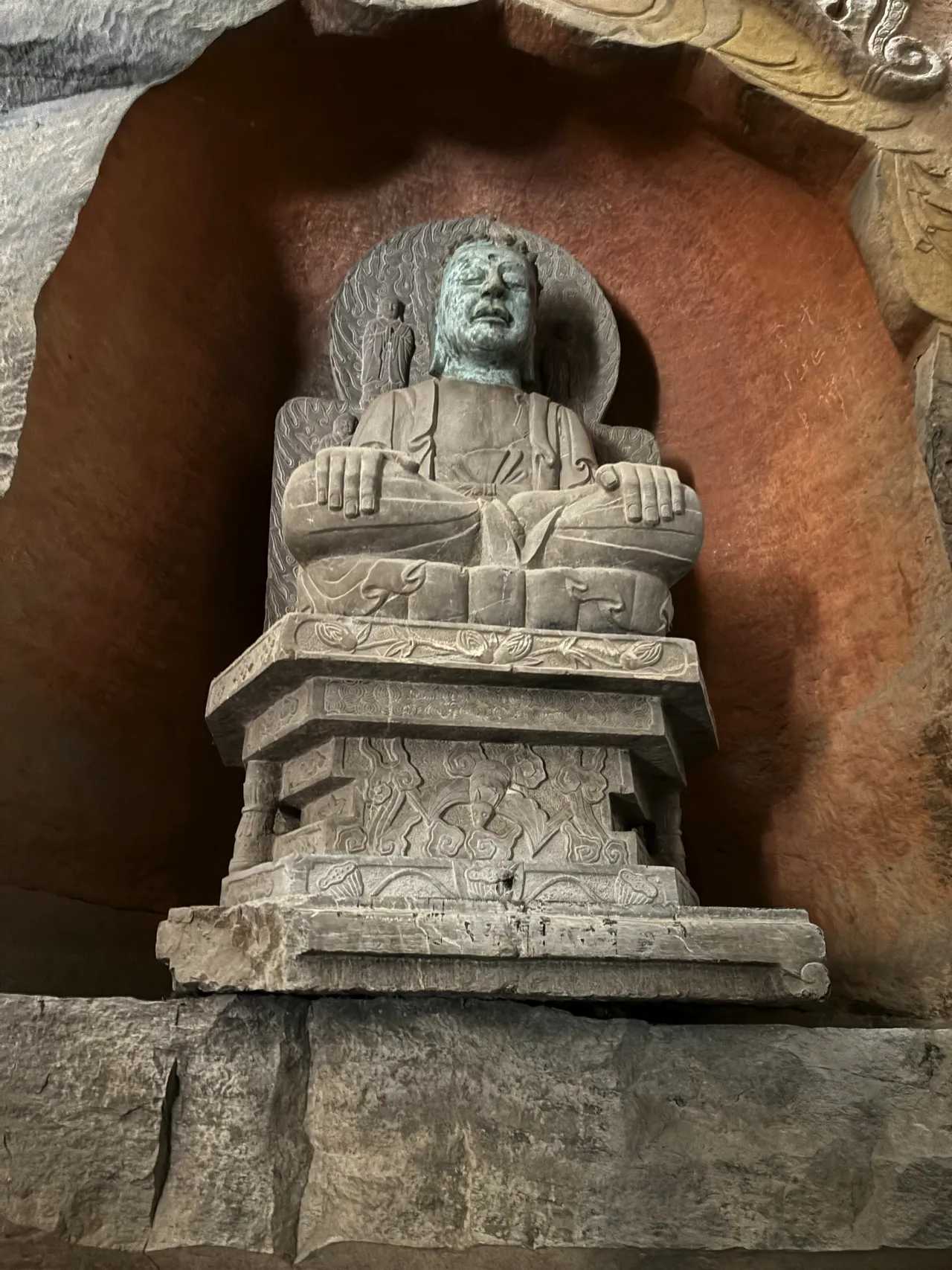
Iconography and Carvings
The main statue, centered around the theme of the Third Buddha, is prominently displayed. The god king’s image is carved on the base, adding a regal touch to the spiritual site. The cave walls feature 16 tower-shaped niches, and the front wall once showcased a two-story relief sculpture titled “Emperor and Empress Paying Respect to Buddha.” This was the largest depiction of homage to Buddha among domestic grottoes, though it has unfortunately collapsed and remains incomplete.
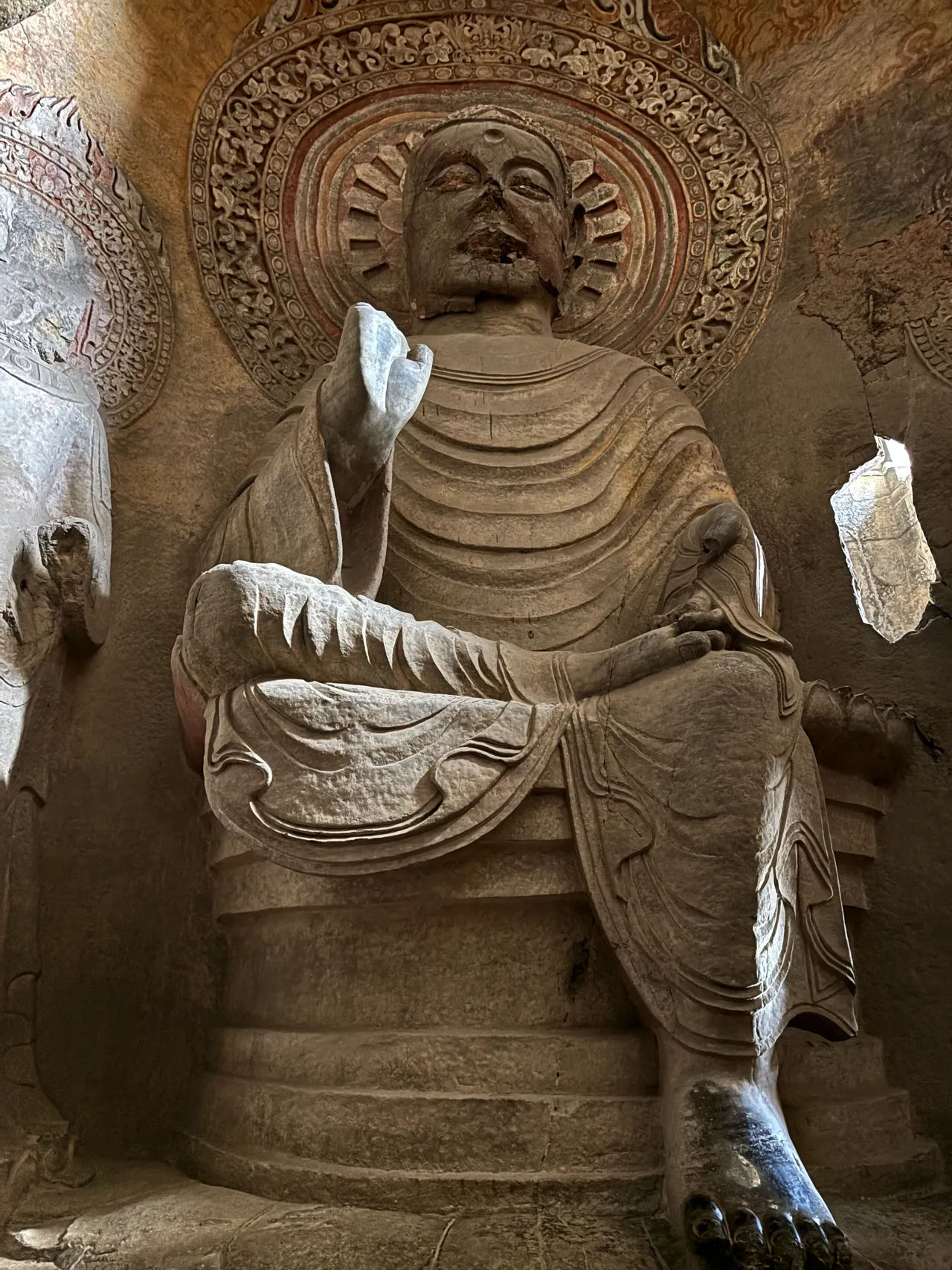
Historical and Cultural Significance
Atop the central square pillar, literature records the “Gao Huanling Cave.” The third niche on the top of the left wall of the central square column serves as the cave door. The main statue in the niche on the front of the central column stands 3.5 meters tall, depicting a figure seated in a lotus position on a round flower base, adorned in a finely patterned double-shouldered robe. Flanking this central figure are statues of two disciples and two Bodhisattvas. Additionally, large niches on the left and right walls house five-body statues, each consisting of one Buddha, two disciples, and two Bodhisattvas.

Dimensions and Preservation
The cave measures 12.5 meters in depth, 13 meters in width, and 12.5 meters in height, with plain walls on all sides. Remnants of the cave opening monument still exist on the north side of the cave’s exterior, offering a glimpse into the cave’s historical context and its significance in the study of religious art and architecture.
Bungan-dong: A Ming Dynasty Cave
Bungan-dong, a cave from the Ming era, is located north of the Big Buddha Cave in the North District of Youku, facing south. This cave offers a unique glimpse into the religious art of its time.
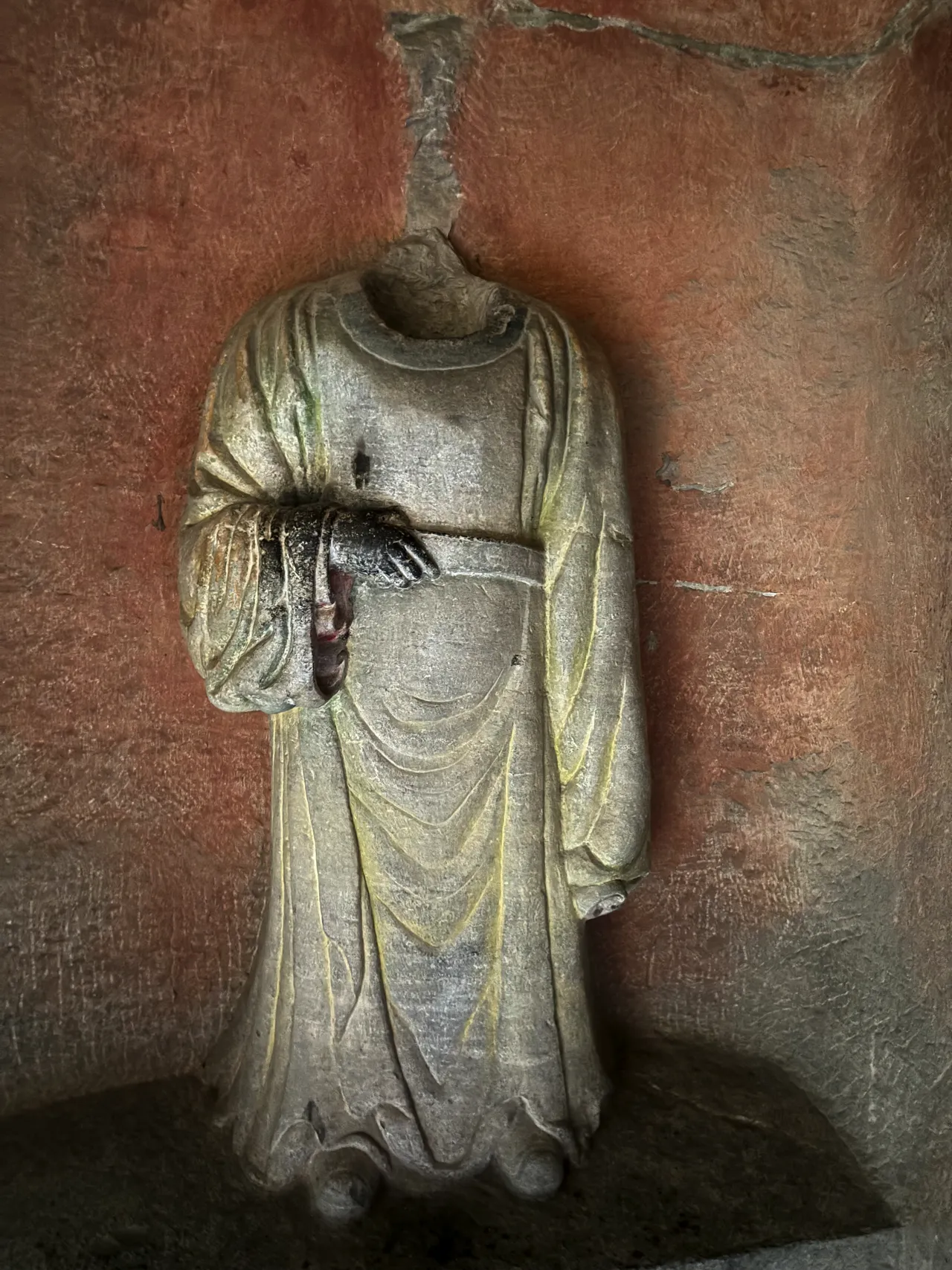
Architectural Layout and Iconography
The cave chamber is horizontally rectangular in plan, optimizing the use of space for religious depictions. A large niche on the front wall prominently features a statue of Sakyamuni, the historical Buddha. Flanking this central figure are statues of the Bodhisattvas Manjusri and Samantabhadra, majestically riding lions and elephants, respectively. These representations symbolize wisdom and practice, key aspects of Buddhist teachings.
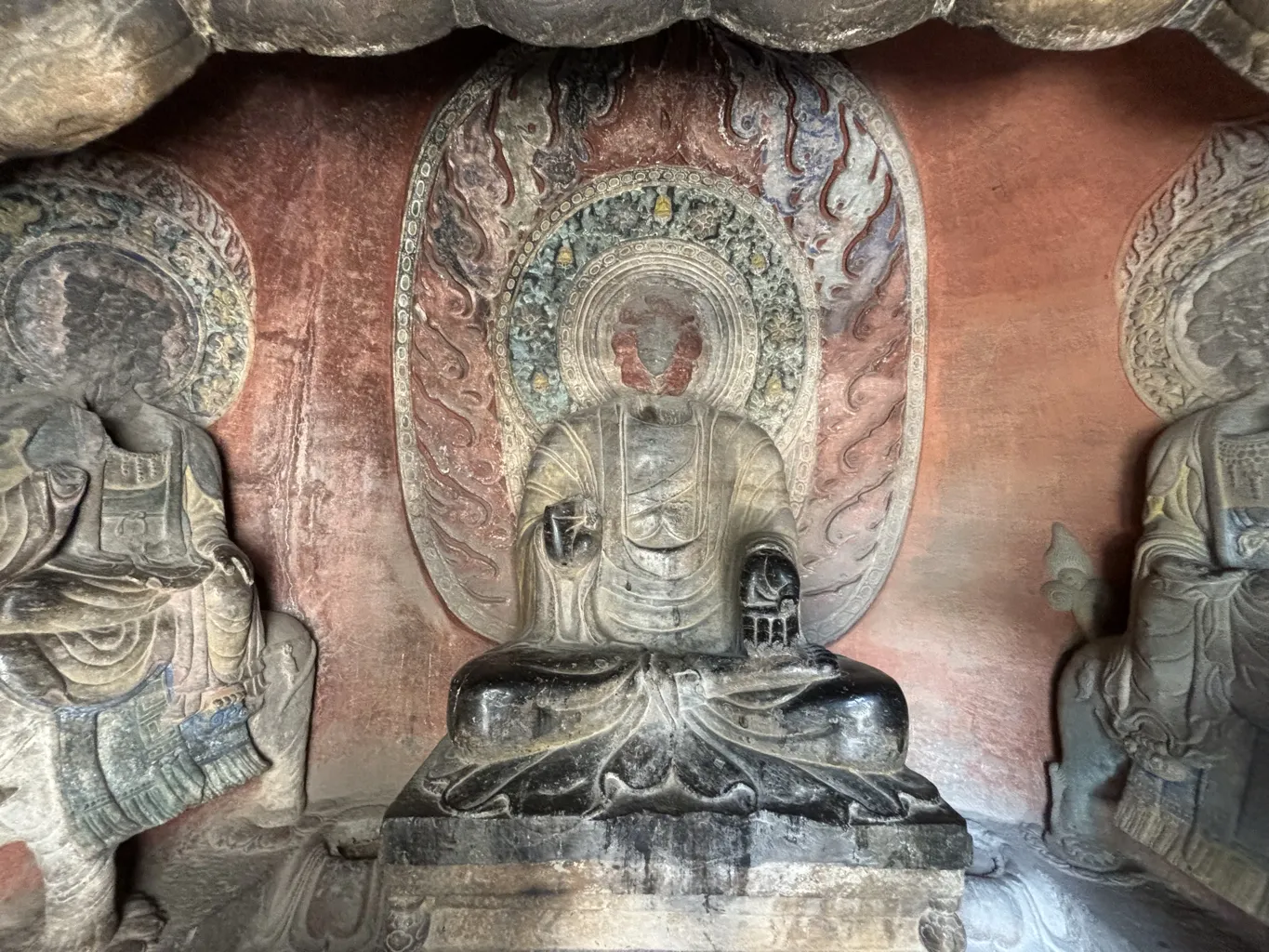
Symbolic Representation of Civil Authority
On each of the left and right walls stands a statue dressed in court attire, representing the image of a civil official. Known as divine kings, these figures, Mizuno and Nagahiro, embody the integration of civil governance and religious reverence during the Ming period. This blending highlights the cave’s role not only as a spiritual sanctuary but also as a symbol of societal structure.
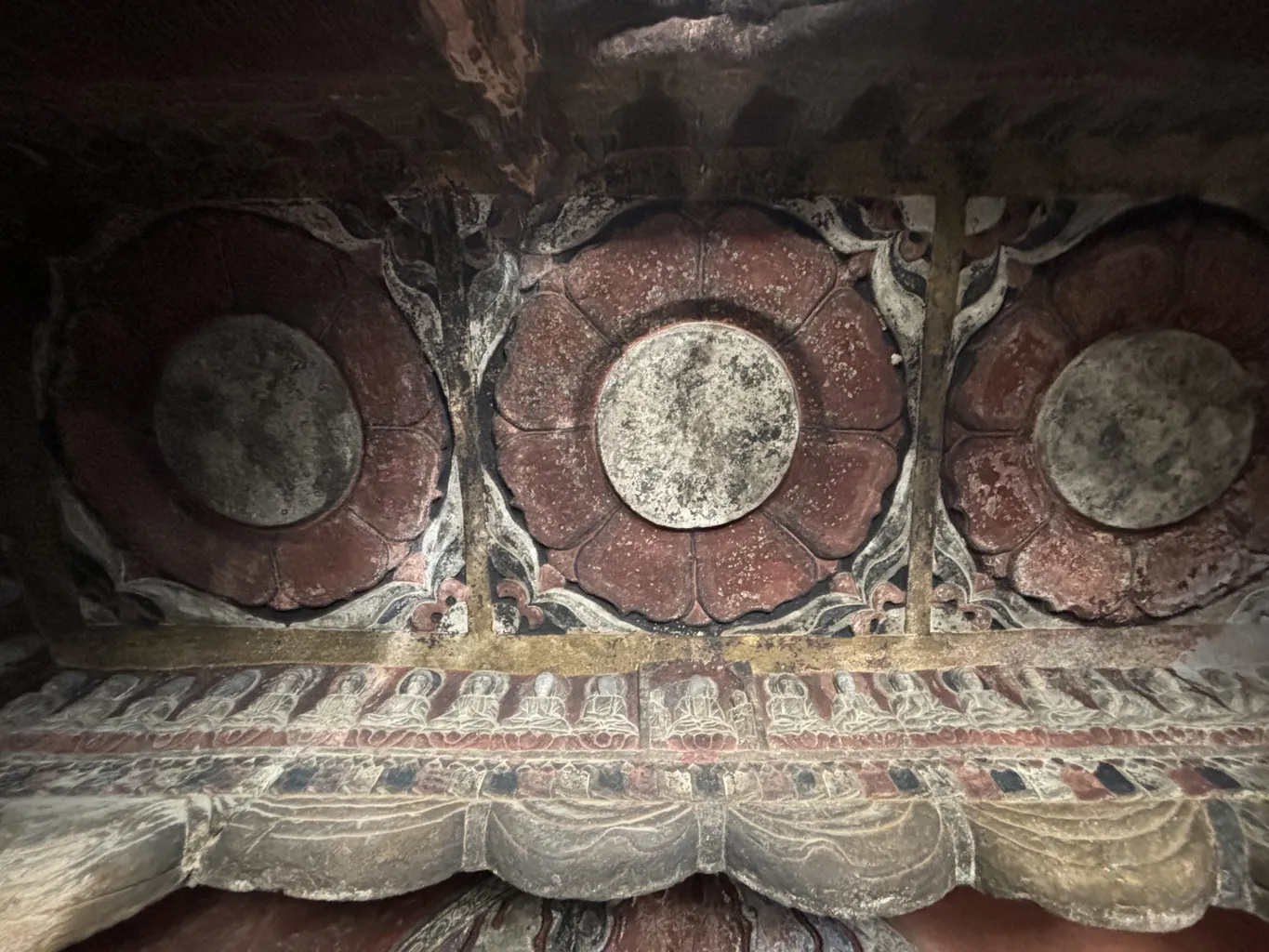
Dimensions and Preservation
The cave measures 3.3 meters in depth and 4 meters in width. Despite its compact size, Bungan-dong captures a rich tapestry of cultural and religious life, making it a significant site for both historical and artistic study.
Song Dong: A Reflection of Northern Qi Artistry
Song Dong, a cave from the Northern Qi period, is strategically located on the south side of the Big Buddha Cave in the North District, facing from south to north. This positioning aligns with traditional Chinese geomantic principles.
Architectural and Artistic Details
The cave’s layout is a horizontally rectangular plane, maximizing wall space for artistic expression. A large niche on the front wall houses seven statues, showcasing the distinctive style, carving technique, and lotus seat decoration characteristic of Northern Qi statues found in the North Cave. This continuity in style underscores a cultural and artistic consistency during the era.
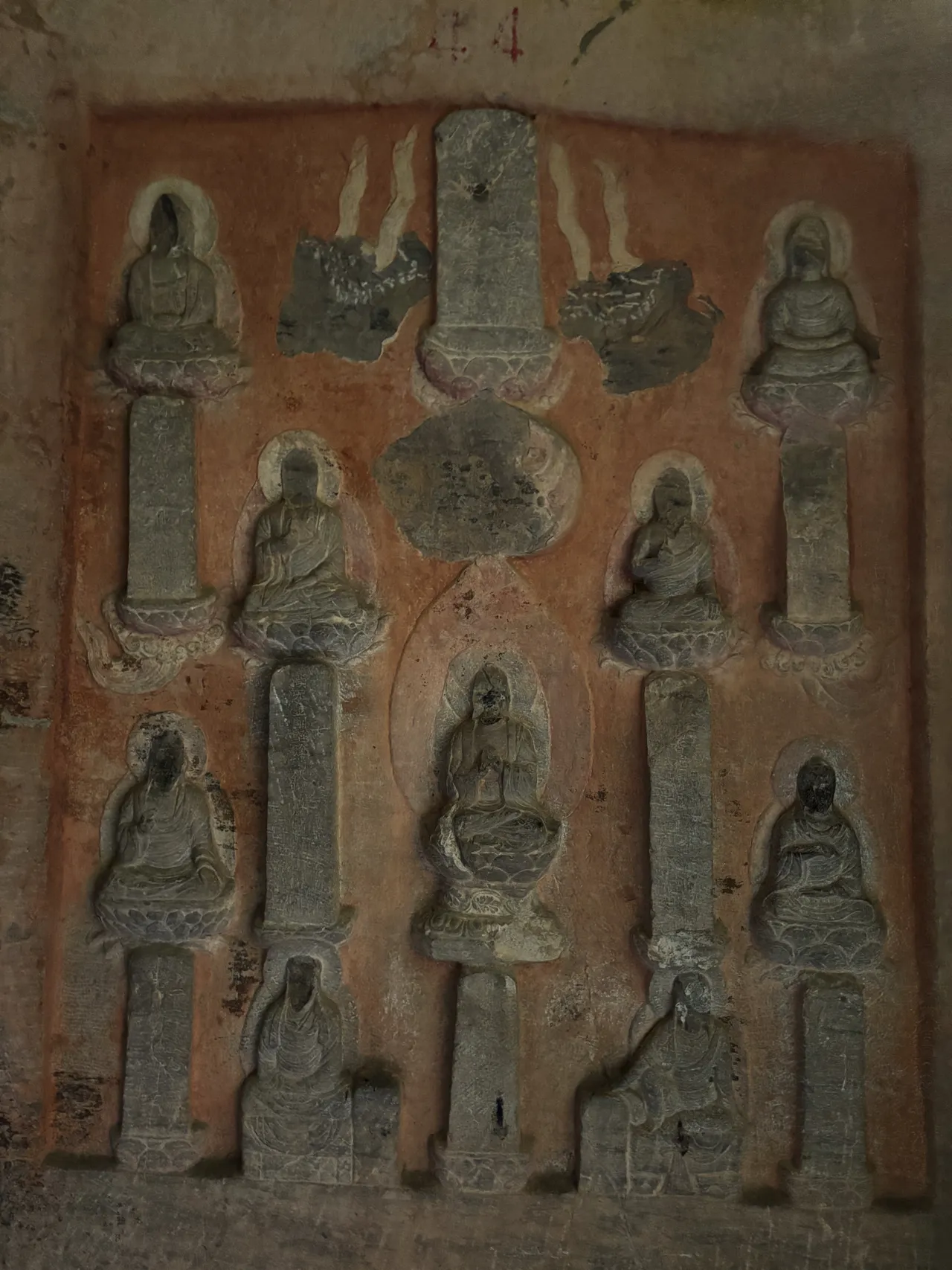
Inscriptions and Symbolic Decorations
On the right wall, artisans engraved seven Buddhas, each depicted with meticulous attention to detail. Lotus-shaped patterns, symbolizing purity and enlightenment in Buddhist iconography, adorn the ground on both sides of the cave door. Adding historical depth, an inscription on the left side of the corridor of the cave door reads, “New Record of Seven Buddhas in the Second Year of Kangding in the Song Dynasty (1041).” This inscription not only dates the artwork but also links it to broader historical narratives.
Dimensions and Preservation
The cave measures 1.5 meters in depth and 3 meters in width. Despite its modest size, Song Dong holds significant artistic and historical value, offering insights into the religious and cultural life of the Northern Qi period. Its preservation allows for continued study and appreciation of ancient Chinese cave art and architecture.
Sui Fulong Cave
Sui Fulong Cave, with artistic contributions spanning the Tang, Song, and Qing dynasties, is located on the north side under the steps of the North District. This cave offers a unique cross-section of Chinese dynastic art and architecture.
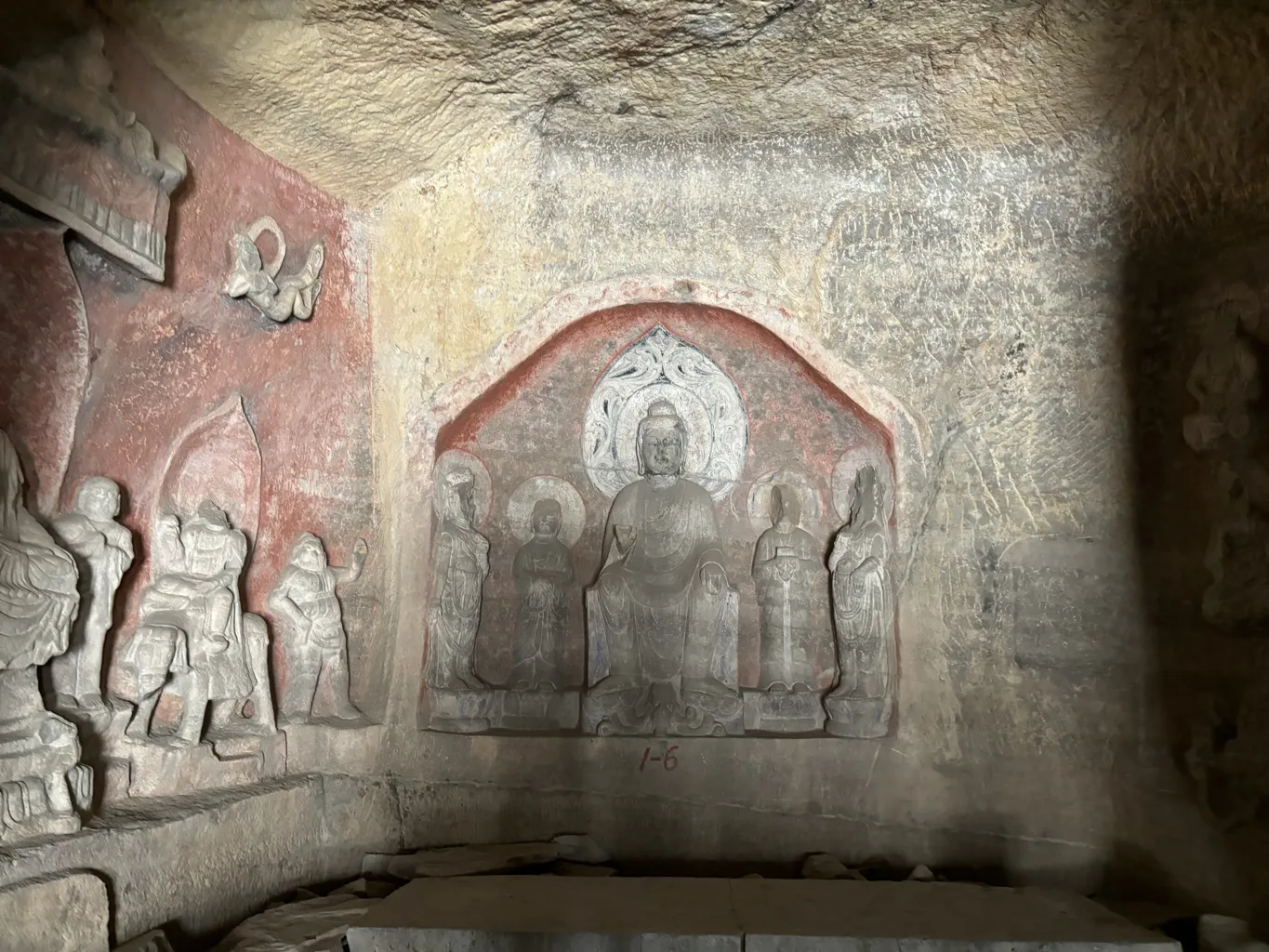
Structural Design and Artistic Elements
The cave chamber is vertically rectangular, optimizing the vertical space for detailed carvings. A niche in the back wall prominently features five figures: a central Buddha flanked by two disciples and two Bodhisattvas, all carved during the Tang Dynasty. This arrangement highlights the primary focus of worship and artistic expression during this period.
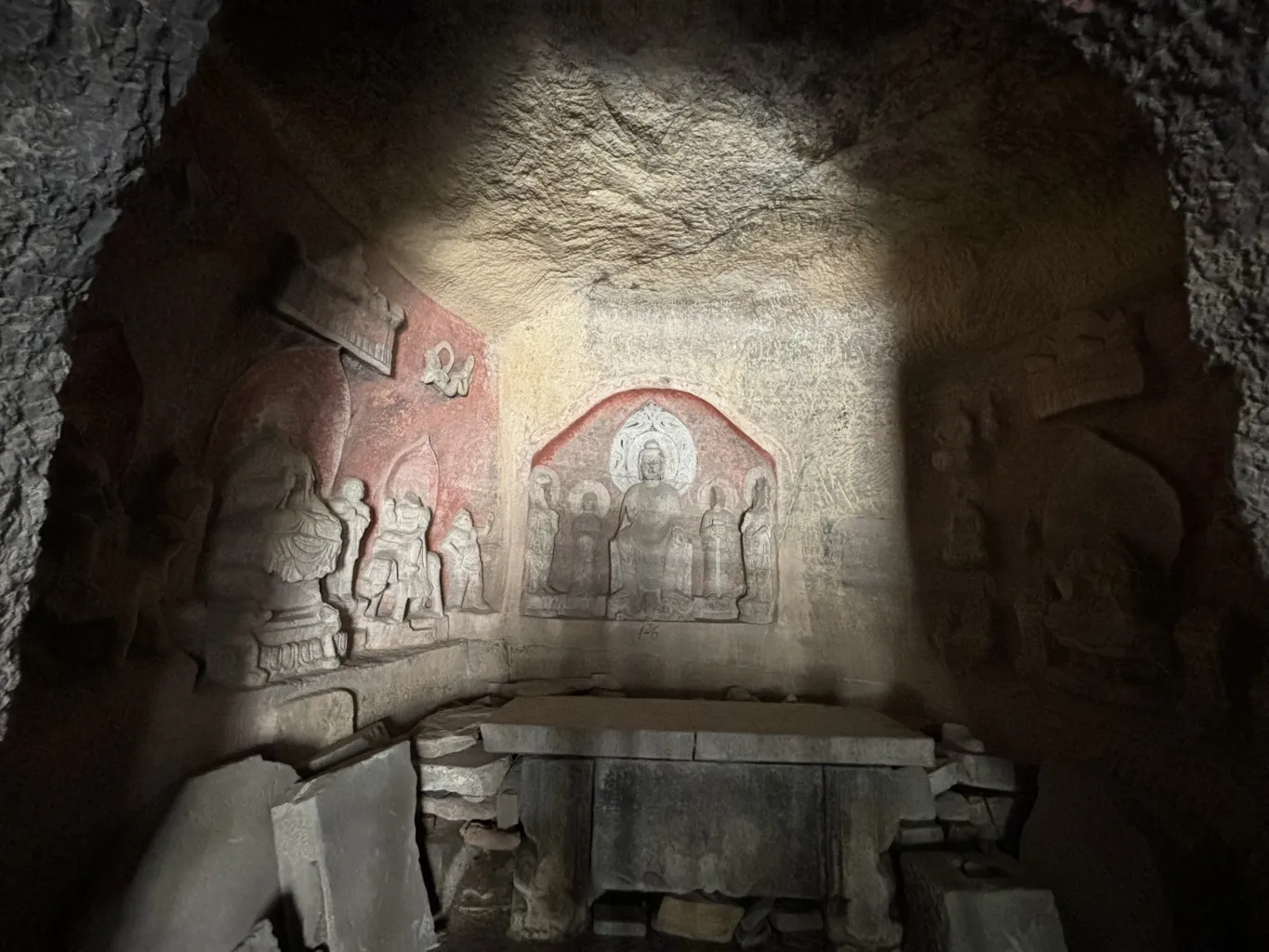
Evolution of Artistic Styles
The left and right walls of the cave feature niche statues that were added in the Song Dynasty, demonstrating the evolution of artistic styles and religious iconography over time. The front roof, constructed during the Qing Dynasty, represents a later architectural addition, showcasing the continuous use and reverence of the cave through successive periods.
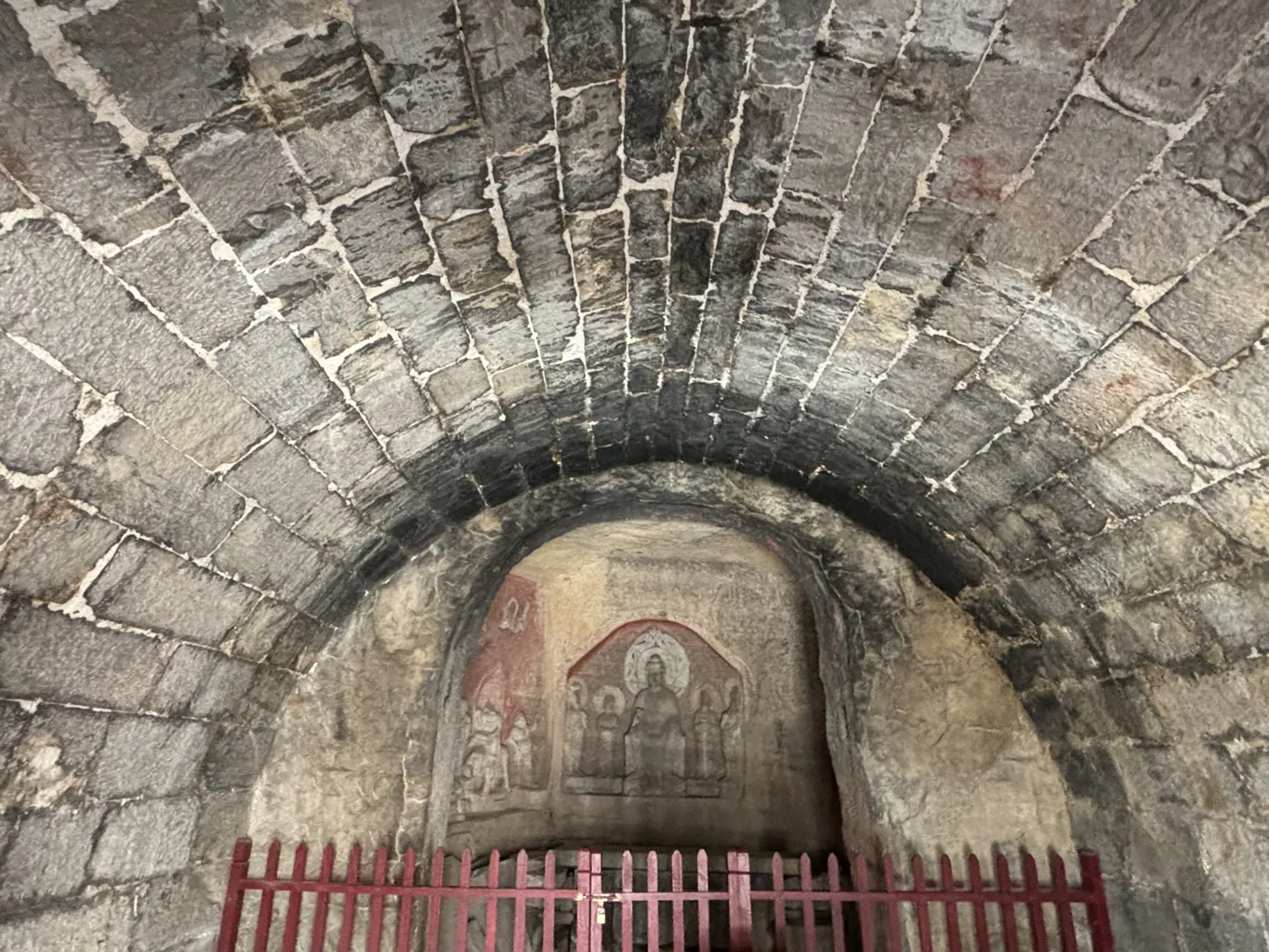
Dimensions and Historical Significance
The cave measures 5 meters in depth and 3 meters in width. Sui Fulong Cave not only serves as a repository of religious art but also as a testament to the enduring cultural and spiritual practices across multiple Chinese dynasties. Its preservation allows for ongoing appreciation and study of the diverse artistic influences that have shaped its structure and decorations.
The Carved Sutra Cave
Carved Sutra Cave, from the Northern Qi era, is situated in the large cave in the south of the grotto area. This cave stands as a profound example of religious devotion and artistic expression.
Architectural and Artistic Layout
The cave is a three-walled Buddhist temple with niches, divided into a front corridor and a back room. The outer facade and the first cave on the upper floor merge into a bowl-covered tower shape, a distinctive architectural style. The front corridor is intricately engraved with the entire “Vimalakīrti Sutra,” showcasing the cave’s role as a scriptural repository.
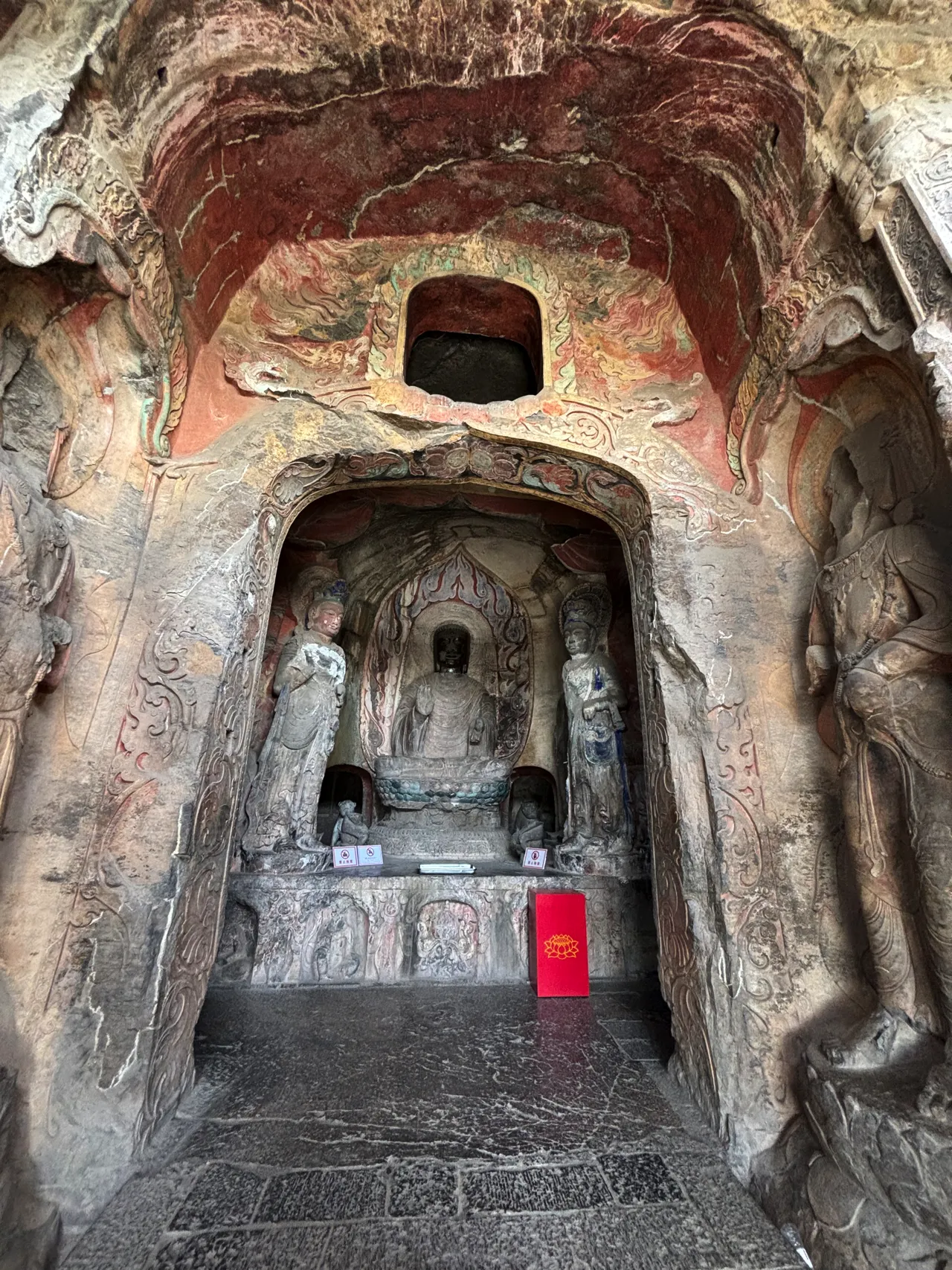
Detailed Carvings and Iconography
On either side of the entrance, statues of strong men stand, symbolizing guardianship and strength. The corridor is adorned with beautifully carved entangled branches and linked beads, adding to the aesthetic richness. The main room, with a square plan and a flat roof, features a lotus caisson carved on the top, enhancing the spiritual ambiance.
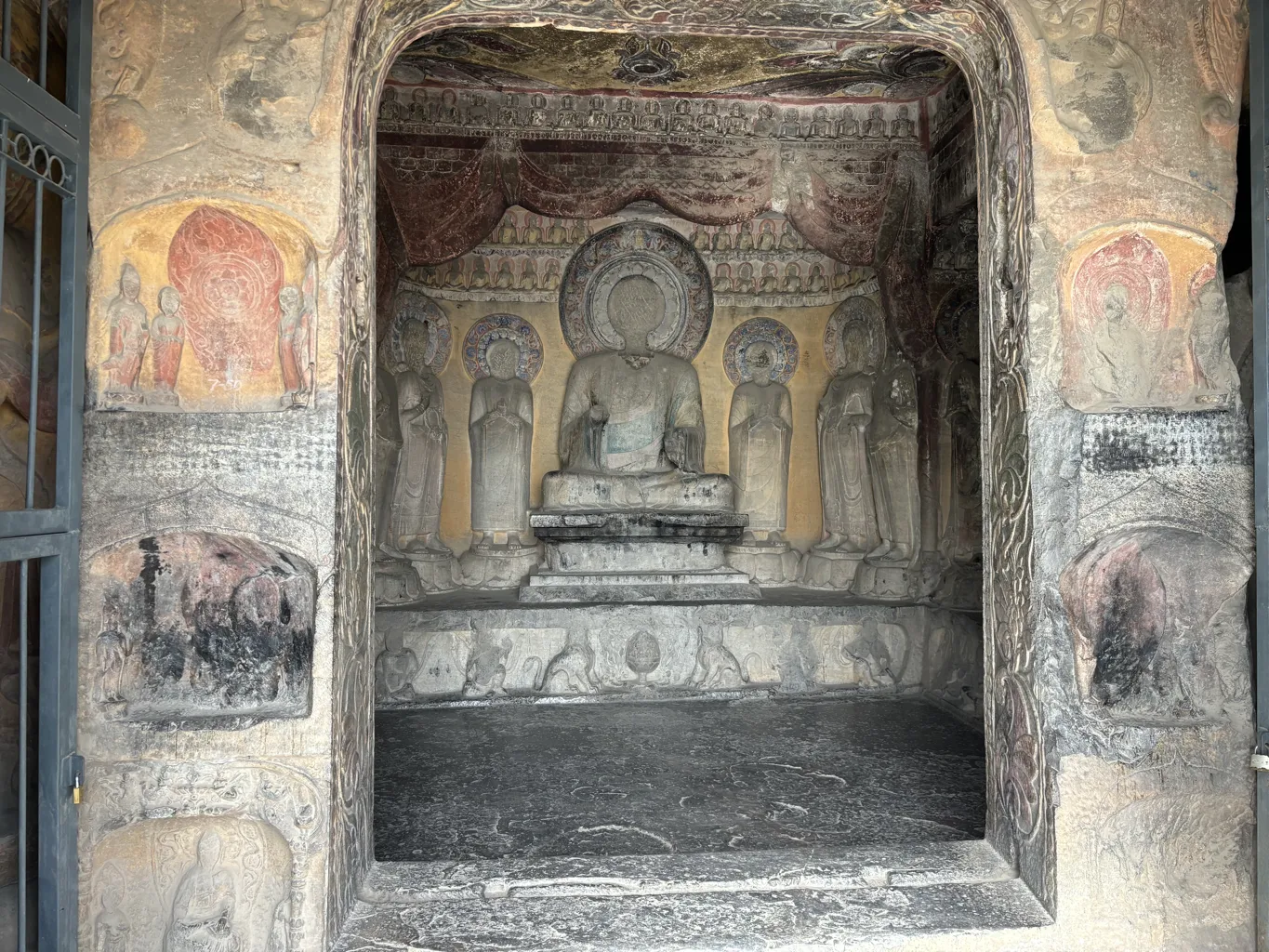
Statues and Inscriptions
Large niches on the main wall and the left and right walls house seven statues, including one Buddha, two disciples, and four attendants, each meticulously carved. The main statue on the main wall sits in a lotus position on a square Xumizuo, with hands in the fearless seal, measuring 2.3 meters in height. Additionally, the “Infinite Meaning Sutra” is inscribed on the left and right sides of the entrance hall on the front wall.
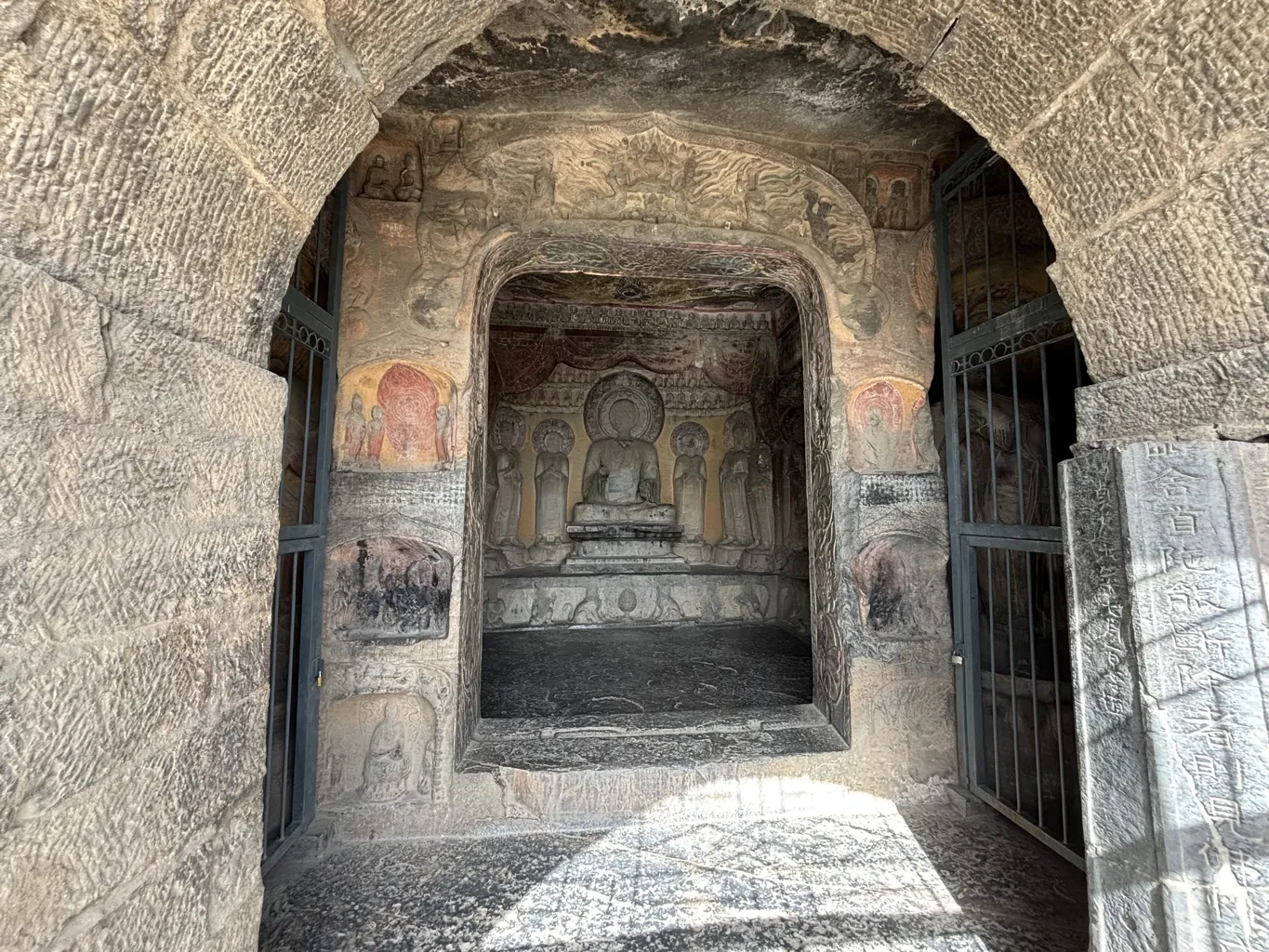
Historical Significance and Dimensions
On the north side of the outside of the cave, the “Tang Yong Sutra Writing Stele” records the time of inscription as “the fourth year of Tiantong’s reign to the third year of Wuping’s reign” (AD 568—572). This stele is crucial for studying the engravings of the Northern Dynasties. The cave measures 5.3 meters in depth and 7.7 meters in width, making it a significant site for both historical study and spiritual reflection.
Sources: Signage from a visit to the site of Xiangtangshan Caves

